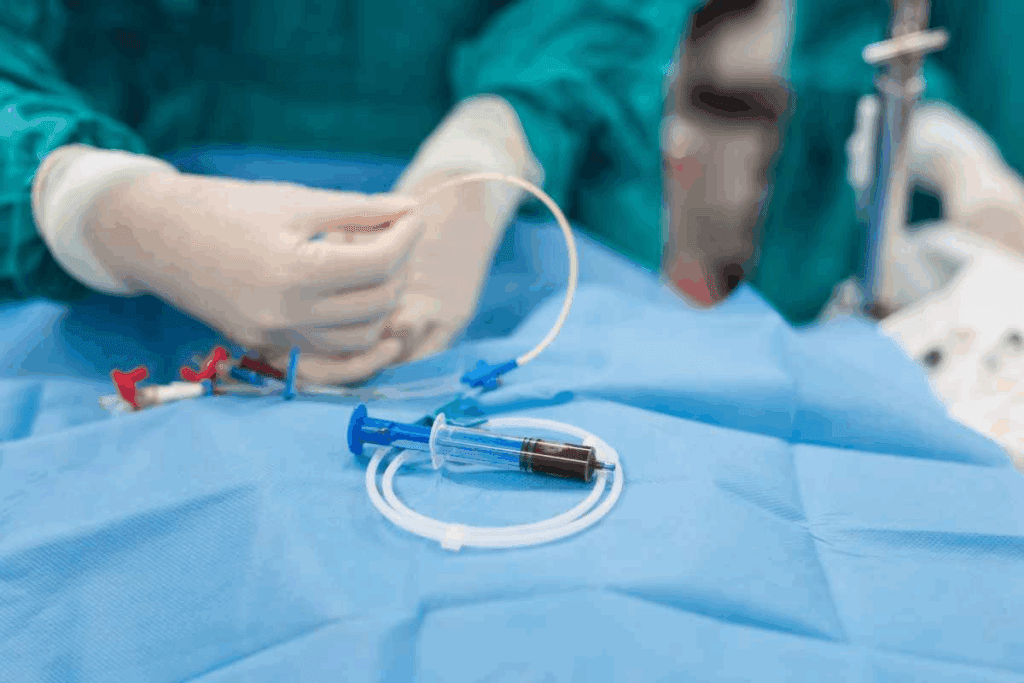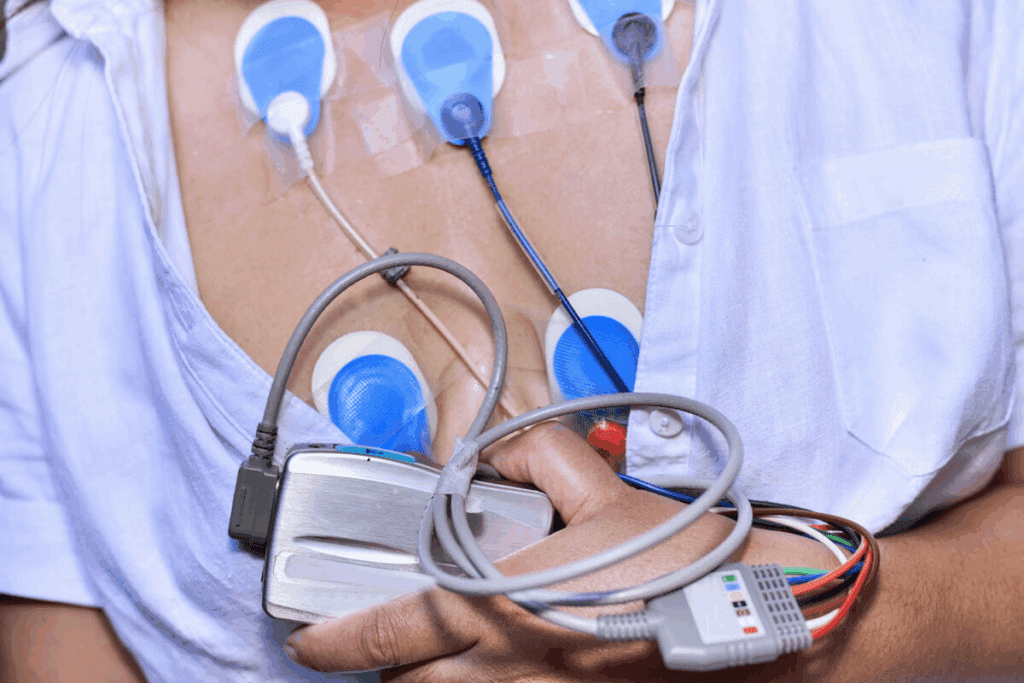Last Updated on October 31, 2025 by Batuhan Temel

If you’ve been told you have atrial flutter and meds aren’t working, cardiac ablation is a safe fix. At Liv Hospital, we focus on you. Our team uses the latest methods to make sure you get the best care. Step-by-step guide on cardiac ablation for atrial flutter, from preparation to recovery and expected outcomes.
Knowing what to expect is key when you’re getting catheter ablation of atrial flutter. This guide will help you understand each step. You’ll learn about the first meetings, tests before the procedure, managing your meds, and what to do after.

Atrial flutter is a heart rhythm disorder that needs a detailed treatment plan. It causes symptoms like palpitations and shortness of breath. Knowing about atrial flutter and its treatments helps patients make better choices for their health.
Atrial flutter is when the heart’s upper chambers beat too fast. This can cause symptoms like palpitations and shortness of breath. Medicine alone often can’t treat atrial flutter. If not treated, it may cause serious problems like heart failure.
Symptoms of atrial flutter vary but often include palpitations and shortness of breath. If not treated, it can lead to serious issues like stroke and heart failure. Early treatment is key to avoid these problems and improve life quality.
Treatments for atrial flutter aim to control the heart rate and rhythm. Cardiac ablation is a good option, as it can cure the condition. It uses energy to destroy the abnormal heart pathway. Other treatments include medicines and cardioversion, which uses electrical shocks to fix the rhythm.
It’s important for patients to understand their treatment options for atrial flutter. This way, they can work with their doctors to find the best treatment plan. Doctors consider the patient’s needs and health to suggest the best approach.

Understanding the cardiac ablation procedure is key for those with atrial flutter. It uses catheters to make scars in the heart. These scars stop abnormal electrical signals that cause arrhythmia.
The procedure starts with catheters inserted through a vein in the groin. They are guided by X-ray or 3D mapping to the heart’s right atrium. Then, they deliver energy to make lesions in the heart tissue.
This disrupts the abnormal electrical pathways causing atrial flutter. The whole process is done under local anesthesia and sedation for comfort. It usually takes 1 to 3 hours, depending on the case.
The cavotricuspid isthmus (CTI) is the main target for ablation in atrial flutter. It’s in the right atrium and is where the abnormal electrical circuit is often found. By making lesions here, we block the abnormal signals and restore the normal rhythm.
There are two main techniques in cardiac ablation for atrial flutter: radiofrequency and cryoablation. Radiofrequency uses electrical energy to heat the tissue, creating lesions. Cryoablation freezes the tissue, achieving the same effect.
Radiofrequency is widely used and has a high success rate. Cryoablation is preferred for some patients because it may reduce damage to surrounding tissues.
The success rate of cardiac ablation for atrial flutter is generally high. Many patients see significant improvement or complete resolution of symptoms. The procedure’s success depends on the patient’s health, the atrial flutter’s characteristics, and the electrophysiologist’s expertise.
Follow-up care is vital to monitor the patient’s condition and adjust medications as needed. Patients should follow their doctor’s instructions closely for the best outcome.
Getting ready for a cardiac ablation for atrial flutter starts with a first meeting with your doctor. This meeting is key to see if you’re a good fit for the procedure. It’s also a chance to talk about any worries or questions you have.
Your doctor will look over your medical history during the first meeting. They want to know about any health issues you’ve had before. It’s important to share everything, like past heart problems, surgeries, or allergies.
Your doctor will also check the medicines you’re taking. This includes any prescription drugs, over-the-counter meds, and supplements. Some medicines might need to be changed or stopped before the procedure to keep you safe.
It’s important to have questions ready for your electrophysiologist. Some questions to think about include:
It’s important to know the risks and benefits of the cardiac ablation procedure. While it’s usually safe, there are risks like bleeding or infection. But for many, the benefits of feeling better and living better outweigh these risks.
| Aspect | Details to Discuss |
| Medical History | Pre-existing conditions, previous surgeries, allergies |
| Current Medications | Prescription drugs, over-the-counter medications, supplements |
| Procedure Details | Method of ablation, expected recovery time, possible risks |
| Post-Procedure Care | Follow-up appointments, medication management, activity restrictions |
By getting ready for your first meeting, you can make sure you’re well-informed. This is a key step to getting the best results and improving your life.
Medical tests before a procedure are key to getting patients ready for cardiac ablation. They give us vital info about the heart’s health. These tests help us see the heart’s condition, spot risks, and plan the procedure well.
An Electrocardiogram (ECG) is a test that shows the heart’s electrical activity at one time. It spots abnormal heart rhythms, like atrial flutter. Holter monitoring is a longer ECG that tracks the heart over 24 to 48 hours. It gives us a full picture of heart rhythm during daily life.
Both tests are vital for checking the heart’s electrical activity. They help us understand how often and long atrial flutter happens.
Blood tests check the patient’s overall health and look for any hidden conditions. Coagulation studies, like INR and PTT, check how well the blood clots. This is important for patients on blood thinners.
Cardiac imaging gives us detailed views of the heart. An echocardiogram uses sound waves to show the heart’s pumping and structure. CT scans give detailed images of the heart’s shape and function.
A Transesophageal Echocardiogram (TEE) uses an ultrasound probe down the esophagus for close-up heart images. It’s great for checking for blood clots in the left atrium before the procedure. This is key to lower stroke risk.
With these thorough tests and checks, we make sure patients are ready for cardiac ablation. This reduces risks and improves results.
In the two weeks before your atrial flutter ablation, managing your medications is key. This time is important for your safety during the procedure and for the best results.
Anticoagulation therapy helps prevent blood clots in atrial flutter patients. Adjustments to your anticoagulation medication may be necessary to lower the risk of bleeding during and after the procedure.
We will check your current anticoagulation regimen. We might switch you to a different medication or adjust your dosage.
Antiarrhythmic medications control your heart rhythm. It’s essential to discuss your antiarrhythmic medication regimen with your doctor to find the best approach before the procedure.
In some cases, we may recommend continuing your antiarrhythmic medications up until the day of the procedure. In other cases, we might advise stopping them temporarily.
Certain over-the-counter (OTC) medications can increase the risk of bleeding or interact with other medications. Avoid taking OTC medications such as aspirin, ibuprofen, or naproxen without consulting your doctor.
| Medication Type | Potential Risk | Recommendation |
| Aspirin, Ibuprofen | Increased risk of bleeding | Avoid or consult your doctor |
| Naproxen | Increased risk of bleeding | Avoid or consult your doctor |
Some supplements and herbal remedies can interact with medications or affect your procedure. It’s critical to inform your doctor about any supplements or herbal remedies you’re taking.
Examples include fish oil, vitamin E, and St. John’s Wort, among others. We will advise you on which supplements to avoid and for how long before your procedure.
By carefully managing your medications in the two weeks leading up to your cardiac ablation, we can minimize risks and optimize your outcome. If you have any questions or concerns about your medications, don’t hesitate to reach out to your healthcare team.
The day before your atrial flutter ablation is key for last-minute steps. It’s important to follow certain guidelines for a smooth procedure. This ensures a good outcome.
Following dietary and fluid rules is a must. You’ll likely need to fast before the procedure. It’s vital to follow your doctor’s fasting instructions to avoid risks. Clear liquids might be okay until a certain time, so check with your doctor.
“Fasting is a key part of getting ready for your procedure,” says a top cardiologist. “By sticking to the dietary rules, you’re helping keep yourself safe during the ablation.”
Good skin prep is essential for a successful procedure. Take a shower or bath the night before or morning using antibacterial soap. Clean the areas where catheters will go well. Don’t use lotions, creams, or powders after bathing, as they can mess with the procedure.
Packing the right things for your hospital stay can make it more comfortable. Bring comfy clothes, any needed meds, and personal items to relax. Leave valuables at home and have a friend or family member with you at the hospital.
Mental prep is as important as physical prep. Feeling anxious before a procedure is normal. Try deep breathing, meditation, or calming music to ease anxiety. Talk to your healthcare provider or a mental health expert about your worries.
“It’s normal to feel some anxiety before a procedure. By facing your fears and managing them, you can go into your ablation with a clearer mind,” says a clinical psychologist.
By following these steps, you’ll be ready for a successful cardiac ablation procedure. Stay calm, follow instructions, and ask questions if unsure.
Getting ready for your cardiac ablation? Knowing what to expect can ease your worries and make the day smoother. We’ll walk you through everything, from when you arrive to after the procedure.
When you arrive, you’ll go to the admission area. There, you’ll change into a hospital gown. Our team will check your medical history, confirm your identity, and get you ready for the procedure. Remember to arrive on time and bring a responsible adult with you. You won’t be able to drive after the procedure.
Before starting, an IV line will be put in for medications and fluids. We’ll also review your current medicines and might give you more to relax. The room will have equipment to watch your heart and other vital signs during the procedure.
Key steps in pre-procedure preparation include:
The cardiac ablation procedure has several steps. First, the area for the catheters is cleaned and numbed. Then, using X-ray or 3D mapping, catheters are inserted through a vein in the groin and guided to the heart. The electrophysiologist uses these catheters to find and treat the source of your atrial flutter.
The step-by-step process includes:
After the procedure, you’ll go to a recovery area. There, you’ll be watched closely for any issues. Our team will check your vital signs, manage any pain, and watch for bleeding or other problems at the catheter sites. You’ll need to stay as quiet as possible for a few hours to avoid bleeding.
We know cardiac ablation is a big deal. We’re here to give you the best care every step of the way.
The recovery after a cardiac ablation for atrial flutter is key. It needs careful attention and following specific guidelines. A structured recovery plan helps ensure a smooth and successful healing process.
Patients are watched in the hospital for a few hours after the procedure. This lets medical staff check for any immediate issues and manage pain or discomfort.
Patients are connected to monitors that track their heart and other vital signs. They also get instructions on post-procedure care and what to expect during recovery.
Before leaving the hospital, patients get detailed care instructions for home. These include managing medications, wound care, and watching for signs of complications.
Following these instructions carefully is vital. It helps avoid complications and ensures a smooth recovery.
If the procedure used a vein in the groin, special care is needed. This prevents infection and helps healing.
Instructions include keeping the area clean and dry, avoiding heavy lifting or bending, and watching for signs of infection like redness, swelling, or increased pain.
Patients are advised to avoid strenuous activities, heavy lifting, and bending for a while. They should gradually return to normal activities under a healthcare provider’s guidance.
| Aspect of Care | Instructions |
| Hospital Recovery | Monitored for a few hours post-procedure, attached to heart rhythm monitors |
| Discharge Instructions | Medication management, wound care, signs of complications to watch for |
| Groin Site Care | Keep clean and dry, avoid heavy lifting or bending, monitor for infection signs |
| Activity Restrictions | Avoid strenuous activities, heavy lifting, and bending; gradual return to normal activities |
By following these guidelines and instructions from healthcare professionals, patients can ensure a safe and effective recovery after cardiac ablation for atrial flutter.
Cardiac ablation for atrial flutter is a hopeful solution for those affected. Many see a big improvement in their symptoms and life quality after it. We’ve walked you through the prep, and now we’ll look at the bright future after the procedure.
The aim of cardiac ablation is to greatly enhance a patient’s life by cutting down or getting rid of atrial flutter symptoms. Research shows that the success rate of atrial flutter ablation is high. This means many patients see lasting benefits, feeling better and able to do more.
The success of the procedure depends on several things, like the patient’s health and the ablation method. With the right care and follow-up, patients can live a better life. We urge patients to stick to their doctor’s advice and keep up with check-ups for the best results.
Doldi, F., et al. (2022). In-hospital mortality and major complications related to catheter ablation of supraventricular tachycardia: Analysis of >10,000 cases. Journal of Cardiovascular Electrophysiology, 33(8), 2222-2230. https://www.ncbi.nlm.nih.gov/pmc/articles/PMC10103566/
Atrial flutter ablation is a medical procedure. It treats atrial flutter, a heart rhythm issue. The method involves scarring heart tissue to stop the abnormal rhythm.
The success rate of cardiac ablation for atrial flutter is high. Studies show it works for 80% to 95% of people.
Atrial flutter ablation carries some risks. These include bleeding, infection, and damage to the heart or blood vessels. Other risks are reaction to anesthesia, blood clots, and stroke.
Recovery time varies, but most people can get back to normal in a few days to a week. Avoiding strenuous activities for a few weeks is recommended.
Radiofrequency ablation uses heat to destroy heart tissue. Cryoablation uses cold. Both are effective, but the choice depends on the patient’s condition and the doctor’s preference.
The need for anticoagulant medications depends on several factors. These include stroke risk and other medical conditions. Your doctor will advise on the best treatment.
Yes, atrial flutter can come back after ablation. The likelihood depends on the procedure’s success and the underlying heart disease.
The procedure uses a catheter inserted through a vein in the groin. It’s guided to the heart. The catheter delivers energy to destroy the abnormal pathways, restoring normal rhythm.
Catheter ablation can cure atrial flutter. It reduces symptoms and improves quality of life. It also lowers the need for medications and complications.
There are no specific dietary restrictions. A healthy diet is recommended for heart health. Your doctor may give specific advice based on your needs.
National Health Service (NHS). (2025). How to Prepare for a Cardiac Ablation for. Retrieved from https://www.nhs.uk/conditions/atrial-fibrillation/cardiac-ablation/
Subscribe to our e-newsletter to stay informed about the latest innovations in the world of health and exclusive offers!
WhatsApp us